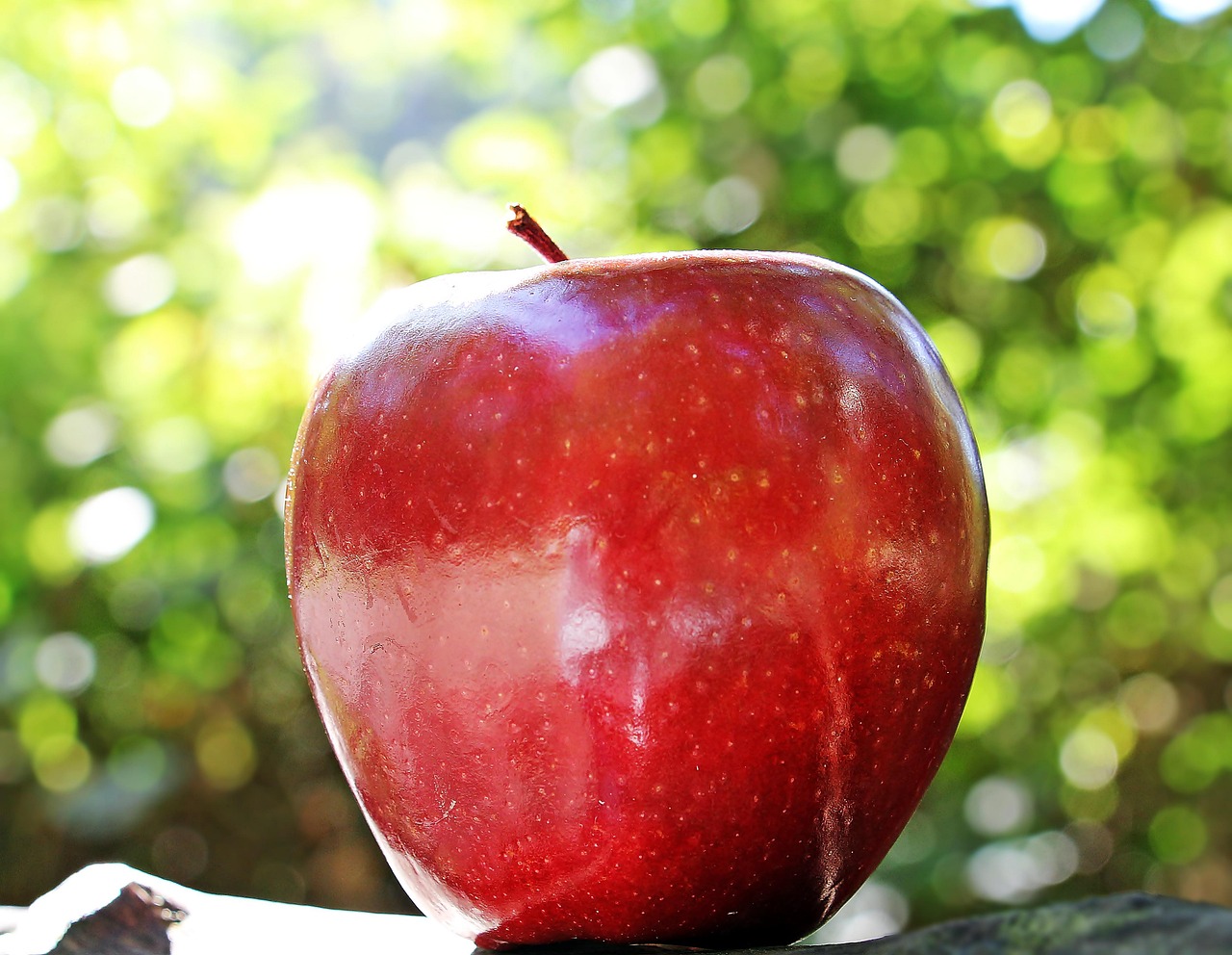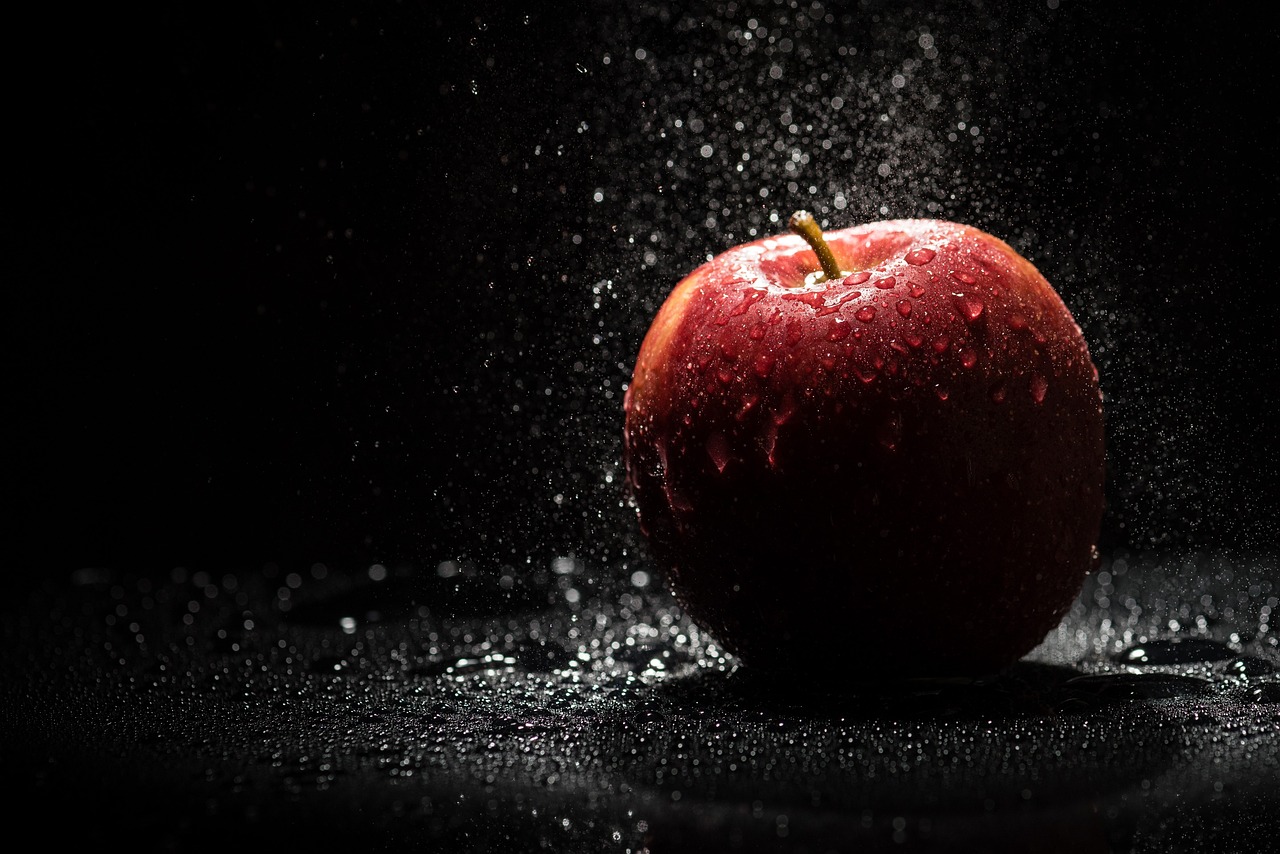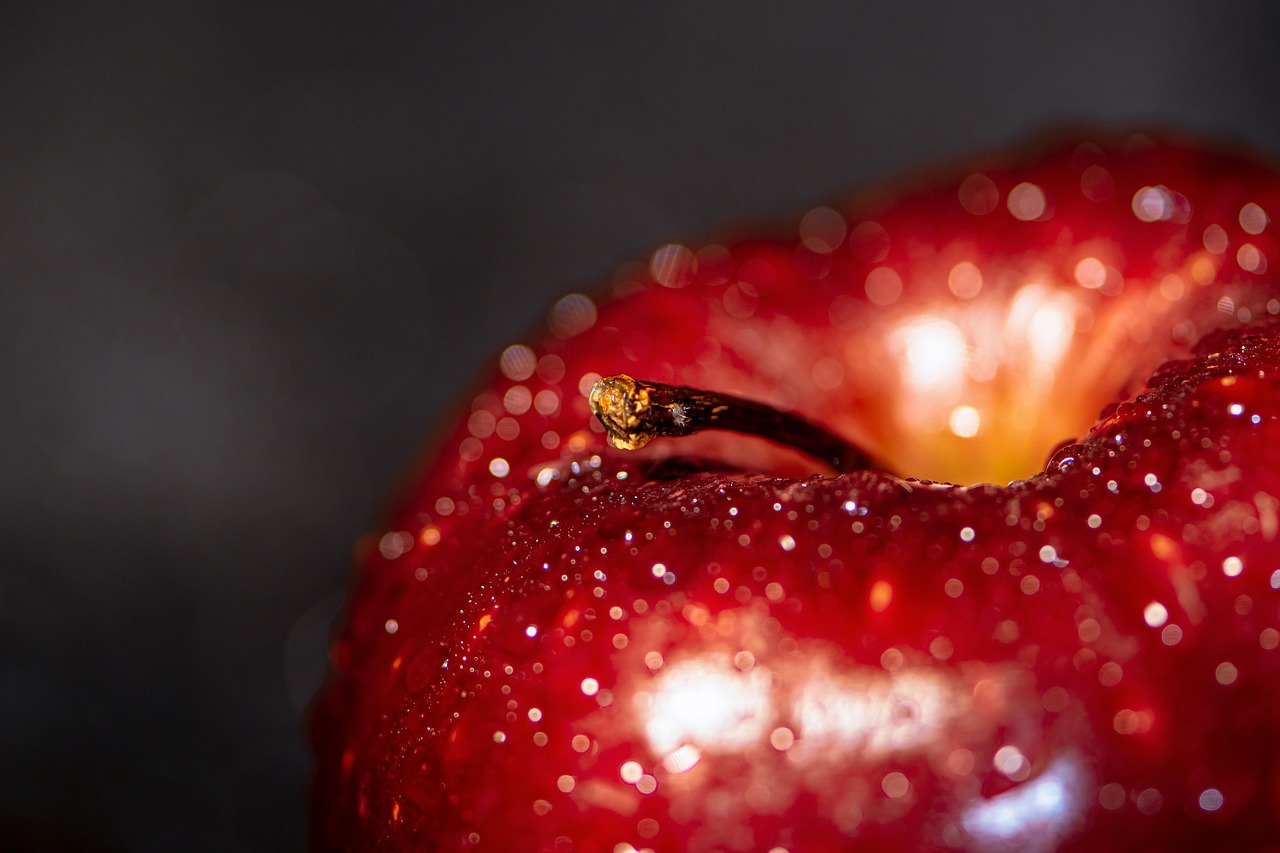The Red Delicious apple tree has a moderate growth rate, typically reaching maturity in 4 to 6 years. It can produce substantial fruit yields, averaging 20 to 30 bushels per acre under optimal conditions.
Understanding Red Delicious Apple Trees
The Red Delicious apple tree is one of the most recognized varieties in the United States. Known for its deep red color and sweet flavor, it has become a staple in many orchards. This tree not only offers delicious fruit but also serves as an attractive addition to any landscape due to its beautiful blossoms and foliage.

When considering the growth and yield of a Red Delicious apple tree, several factors come into play. These include the tree’s age, the care it receives, soil quality, and climate conditions. Understanding these elements can help growers maximize their harvest and ensure healthy tree development.
Growth Rate of Red Delicious Apple Trees
The growth rate of a Red Delicious apple tree varies based on its environment and care. Generally, these trees are considered to have a moderate growth rate. They typically grow between 12 to 24 inches per year. Several factors influence this growth rate, including:
- Soil Quality: Well-drained, fertile soil promotes faster growth.
- Watering: Consistent and adequate watering is crucial for healthy development.
- Sunlight: Full sunlight exposure encourages robust growth and fruit production.
- Pest Management: Protecting trees from pests and diseases supports steady growth.
Young trees usually take about 3 to 4 years to start producing fruit. However, it can take up to 6 years for them to reach full production capacity. Once established, the trees can live for several decades, providing a long-term source of fruit.

Fruit Yield Expectations
The fruit yield from Red Delicious apple trees is quite impressive when cared for properly. Factors that affect yield include tree age, health, and growing conditions. Here are some general yield expectations:
| Tree Age (Years) | Average Yield (Bushels per Acre) |
|---|---|
| 3 | 5-10 |
| 5 | 15-20 |
| 7 | 25-30 |
| 10+ | 30+ |
A mature Red Delicious apple tree can yield between 20 to 30 bushels per acre under optimal conditions. Growers can expect peak production around the 10-year mark. It’s essential to maintain proper pruning and thinning practices to ensure that trees do not overproduce, which can lead to smaller fruit size and lower quality.
Factors Influencing Growth and Yield
Several environmental and care-related factors can significantly impact the growth rate and fruit yield of Red Delicious apple trees. Understanding these factors can aid in effective management practices:

- Climate: These trees thrive in temperate climates with well-defined seasons.
- Pollination: Cross-pollination with other apple varieties can enhance fruit set and yield.
- Nutrient Management: Adequate fertilization supports healthy growth and fruit development.
- Pest Control: Regular monitoring and management of pests ensure healthy trees and better yields.
Overall, careful planning and management are vital when growing Red Delicious apple trees. By understanding their growth patterns and yield potential, growers can enjoy bountiful harvests year after year.
Soil Requirements for Red Delicious Apple Trees
The soil in which Red Delicious apple trees are planted plays a crucial role in their growth and fruit production. To achieve optimal results, it is important to understand the specific soil requirements for these trees.
Soil Type
Red Delicious apple trees prefer well-drained soils that retain moisture while also allowing excess water to escape. The ideal soil types include:
- Sandy Loam: This soil type is light and well-draining, providing good aeration for the roots.
- Clay Loam: While heavier, clay loam can retain nutrients and moisture effectively when managed properly.
- pH Level: The ideal pH level for apple trees is between 6.0 and 7.0, slightly acidic to neutral.
Soil Preparation
Before planting, it is essential to prepare the soil adequately. This involves:

- Testing Soil: Conduct a soil test to determine nutrient levels and pH balance.
- Amending Soil: Based on test results, add organic matter, such as compost, to improve fertility and structure.
- Tilling: Turn the soil to a depth of 12 inches to ensure proper aeration and mix in amendments.
Watering Needs of Red Delicious Apple Trees
Watering is vital for the healthy growth of Red Delicious apple trees. Proper watering practices can lead to improved fruit yield and quality.
Watering Frequency
The frequency of watering depends on several factors, including climate, soil type, and tree age. Here are some guidelines:
- Young Trees: Newly planted trees require more frequent watering, typically every 1 to 2 weeks, especially in dry conditions.
- Mature Trees: Established trees may need watering every 2 to 4 weeks during dry spells.
Watering Techniques
Effective watering techniques include:
- Deep Watering: Water deeply to encourage deep root growth. Aim for 12-18 inches of moisture in the root zone.
- Drip Irrigation: This method delivers water directly to the roots, reducing evaporation and runoff.
- Avoiding Overwatering: Ensure proper drainage to prevent root rot and other water-related diseases.
Pest and Disease Management
Pest and disease management is essential for maintaining healthy Red Delicious apple trees. Early detection and intervention can prevent significant damage to the trees and their fruit yield.
Common Pests
Several pests can affect Red Delicious apple trees, including:
- Apple Maggot: This pest lays eggs in the fruit, causing it to become inedible.
- Codling Moth: Larvae burrow into the fruit, leading to decay.
- Aphids: These insects suck sap from leaves, weakening the tree.
Disease Prevention
The following diseases are common among apple trees:
- Apple Scab: A fungal disease that causes dark spots on leaves and fruit.
- Powdery Mildew: This fungal infection creates a white powdery coating on leaves and stems.
- Cedar Apple Rust: This disease requires both cedar and apple trees to complete its life cycle.
Pest Control Methods
A variety of methods can be used to manage pests and diseases effectively:
- Cultural Practices: Maintain good hygiene by cleaning fallen fruit and debris from around the tree.
- Organic Treatments: Use neem oil or insecticidal soaps for pest control.
- Pesticides: When necessary, apply chemical controls according to local regulations and safety guidelines.
Nutrient Management for Optimal Growth
Nutrient management is critical for the growth and productivity of Red Delicious apple trees. Providing the right nutrients helps enhance fruit quality and overall tree health.
Nutrients Needed
The primary nutrients required by apple trees include:
- Nitrogen (N): Essential for leaf growth and overall vigor.
- Phosphorus (P): Important for root development and flowering.
- Potassium (K): Supports fruit quality and disease resistance.
Fertilization Schedule
A proper fertilization schedule can enhance growth rates. Here are some recommendations:
- Spring Application: Apply a balanced fertilizer in early spring as new growth begins.
- Mid-Season Boost: Consider a second application in late June or early July for continued support.
- Soil Testing: Regularly test soil to adjust nutrient applications based on tree needs.
Following these practices will help ensure robust growth and fruitful harvests of Red Delicious apple trees throughout their lifespan.
Pruning and Training Red Delicious Apple Trees
Pruning and training are essential practices for growing healthy Red Delicious apple trees. These methods enhance sunlight penetration, improve air circulation, and promote better fruit development.
Why Prune?
Pruning serves several purposes, including:
- Removing Dead or Diseased Wood: This helps prevent the spread of diseases and pests.
- Encouraging New Growth: Pruning stimulates the growth of new fruiting wood.
- Shaping the Tree: Proper shaping maintains a manageable size and shape for easier harvesting.
When to Prune
The best time to prune Red Delicious apple trees is during their dormant season, typically in late winter or early spring before bud break. This timing minimizes stress on the tree and encourages vigorous growth when the growing season begins.
Pruning Techniques
Several techniques can be employed when pruning Red Delicious apple trees:
- Thinning Cuts: Remove entire branches back to their point of origin to improve airflow and light exposure.
- Heading Cuts: Trim back branches to encourage bushier growth and more fruiting spurs.
- Corrective Pruning: Address any structural issues, such as crossing branches or weak angles.
Harvesting Red Delicious Apples
Harvesting is a critical phase in the life cycle of Red Delicious apple trees. Proper timing and technique can significantly affect the quality of the fruit.
When to Harvest
Red Delicious apples typically mature in late summer to early fall, depending on the local climate. Here are some signs to look for when determining if apples are ready for harvest:
- Color Change: The apples should develop a deep red color with a glossy finish.
- Fruit Drop: Some apples may naturally drop from the tree when they are ripe.
- Taste Test: Sampling the fruit can help gauge sweetness and flavor maturity.
Harvesting Techniques
Proper harvesting techniques will prevent damage to the fruit and tree:
- Hand Picking: Gently twist and lift the apple from the branch to avoid breaking it.
- Avoiding Impact: Place harvested apples in soft containers to prevent bruising.
- Use Ladders Safely: When using ladders for high branches, ensure stability and safety precautions.
Post-Harvest Care
After harvesting, proper care of the apples is essential to maintain their quality and extend shelf life.
Storage Conditions
The ideal storage conditions for Red Delicious apples include:
- Temperature: Store apples at 30-32°F (-1 to 0°C) in a cool environment.
- Humidity: High humidity levels (around 90-95%) help reduce moisture loss.
- Avoiding Ethylene Gas: Store apples away from other fruits that emit ethylene gas, which promotes ripening.
Handling and Packaging
Handling apples carefully during storage is crucial. Consider these practices:
- Avoid Bruising: Handle apples with care, especially during transport.
- Packing Materials: Use padded containers or boxes to minimize movement and impact during storage.
Pest and Disease Management After Harvest
Pest and disease management does not stop after harvesting. It is vital to continue monitoring for issues that could affect stored apples or future crops.
Common Post-Harvest Issues
Some common problems that can arise after harvest include:
- Storage Rot: Fungal infections can develop if apples are stored improperly.
- Pests in Storage: Regularly check for pests that may invade storage areas.
Preventative Measures
The following measures can help minimize post-harvest issues:
- Regular Inspections: Check stored apples frequently for signs of decay or pests.
- Cleansing Storage Areas: Keep storage areas clean and organized to reduce risks of infestations.
By implementing these practices, growers can ensure a successful harvest of high-quality Red Delicious apples while maintaining the health of their trees for future seasons.
Environmental Considerations for Red Delicious Apple Trees
When growing Red Delicious apple trees, it is essential to consider environmental factors that impact their health and productivity. These trees thrive best in specific conditions that support their growth and fruit development.
Climate Requirements
Red Delicious apple trees flourish in temperate climates. Here are some key climate considerations:
- Temperature: Ideal temperatures during the growing season range from 75°F to 85°F (24°C to 29°C). Cold winters are necessary to ensure proper dormancy.
- Frost Sensitivity: Late spring frosts can damage blossoms, so planting in a location that minimizes frost risk is crucial.
- Humidity: Moderate humidity levels help prevent diseases but excessive humidity can promote fungal infections.
Sunlight Requirements
Red Delicious apple trees require full sunlight for optimal growth and fruit production. Here are some tips for ensuring adequate sunlight:
- Planting Location: Choose a site with unobstructed sunlight exposure for at least 6 to 8 hours a day.
- Spacing: Provide sufficient space between trees to avoid shading and encourage airflow.
Common Challenges in Growing Red Delicious Apple Trees
While growing Red Delicious apple trees can be rewarding, several challenges may arise. Awareness of these issues can help growers address them effectively.
Pest Management Challenges
Pest infestations can threaten the health and productivity of apple trees. Common pests include:
- Spider Mites: They can cause leaf discoloration and reduced photosynthesis.
- Japanese Beetles: These pests feed on leaves and can damage fruit quality.
Disease Management Challenges
Diseases can also impact tree health. Some prevalent diseases include:
- Canker: This fungal disease causes lesions on branches and can lead to dieback.
- Fire Blight: A bacterial disease that affects blossoms and young shoots, resulting in wilting and blackening.
Nutritional Needs Over Time
The nutritional needs of Red Delicious apple trees change as they mature. Understanding these changes can help optimize growth and yield.
Nutrient Adjustments
As trees age, their nutrient requirements may shift. Here are some considerations:
- Younger Trees: Focus on nitrogen-rich fertilizers to promote vegetative growth during the first few years.
- Mature Trees: Balance nitrogen with phosphorus and potassium to support fruiting and overall health.
Final Thoughts
The journey of growing Red Delicious apple trees involves understanding their unique growth rates, fruit yields, and care requirements. These trees offer substantial rewards with proper attention and management. By considering factors such as soil quality, watering needs, pest management, and overall environmental conditions, growers can maximize both the health of their trees and the quality of their fruit.
Additionally, staying informed about common challenges—such as pest infestations and diseases—will allow growers to take proactive measures. Ultimately, with dedication to good practices in pruning, harvesting, and post-harvest care, Red Delicious apple trees can provide delicious apples for many years.
Whether you are a seasoned grower or a novice gardener, the Red Delicious apple tree presents an excellent opportunity for fruitful gardening experiences. Embracing these practices will lead to bountiful harvests, contributing to the enjoyment of one of America’s favorite apple varieties.
